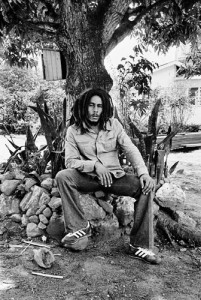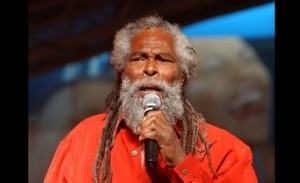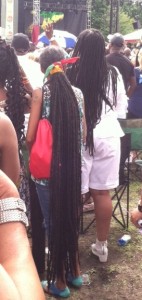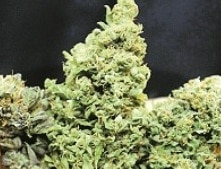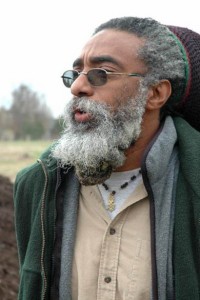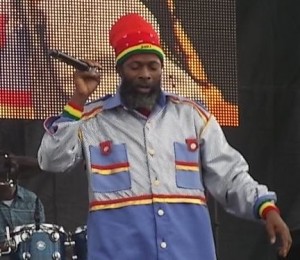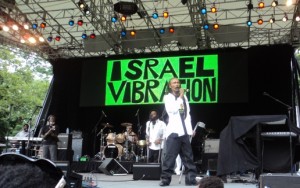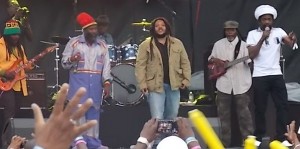Religion of Jamaica
Religion plays a very important role in the lives of Jamaica people and Jamaican Culture. In fact, Jamaica has the highest number of churches per capita (per person) in the world. The island is 4,244 square miles or 10,991 square kilometers in surface area and the population is estimated close to 2.9 million people. It was no surprise that in the last census poll taken in 2011, there were an overwhelming 2,050,771 Jamaicans that says they have affiliation with a church while only 572,008 said they had no religious ties. The remaining folks on the island were not available for the census.
There are approximately twenty-one different religious groups on the island. Among some of the larger religious groups are the Seventh Day Adventist, Baptists, Pentecostal, The Church of God, Anglican, Roman Catholics, Unites Church, Methodists, Jehovah’s Witnesses, Rastafarians, Moravians, Brethren, Hindus, Jews, Muslims and more.
The Rastafarian Religion and the Rastafarians beliefs are said to have similarities with other religions. Their beliefs are based on the Bible like other faith but their understanding and interpretation takes on different meaning. In the true Rastafarian culture everyone (man, woman and child) are equal. So as they speak to each other its I and I. Over time, to further separate Rastafarians culture from the Western Babylon System (The white Americas and European power, greed, inequality system), they started to change certain words. For example, rather than say “Understand” it’s “Overstand” “Continual” is “I-tunal”, “Concept” is “I-cept”, “Appreciate” is Appreci-Love”, “Right-Back to “Right-Forward”, “Celebrations” to “Groundations.”
Rastafarians
Rastafarians has about one million followers worldwide. The birthplace of the Rastafarian movement started in Jamaica. The movement started in the 1920s but became widely publicized on the 2nd of November, 1930 when Ras Tafari Makonnen was crowned Emperor Haile Selassie I (1892-1975) of Ethiopia. The Rastafarians sees Emperor Haile Selassie I as a rebirth of Christ and they worship him as Kings of Kings and Lord of Lords.
In 1932 Leonard Percival ‘Gong’ Howell organized the Rastafarian movement in Jamaica. The movement helped to lift the spirit of many Jamaicans who wanted more and were looking for an alternative. The Rasta people wanted someone or something they could identify with. The Rastafarian Religion was their answer and they embraced it. The growing of their dread-locks would become their identity; a form of cultural expression. The Rastafarians adopted the Ethiopian flag to represent their journey and the flag’s symbol, the crowned king “The Conquering Lion of the Tribe of Judah.”
Rastafarianism Beliefs:
Rasta is Love; Rasta is about Caring, Sharing, Loving, and Giving. The Rastafarian Religion is about spreading love. For some Rastafarians the term “Rastafarianism” is not accepted. The “schisms and isms” represents been oppressed in the Babylonian System. For Rasta’s, Jah, their Jesus is black and their faith is more in line with Christianity, the Old Testament and the Book of Revelation. Rastafarians do not believe in life after death and Zion (Africa) is their heaven on earth. So when they say “Ever-living” it’s not just eternal spiritually but also physically. For true Rastafarians, it’s always “One Love, Oneness” so it’s never “you and I” but “I and I”, equal rights and justice. The Holy Piby is their Bible and Ganja / Marijuana is their holy herb and a ritual part of their religion. Rasta does not drink alcohol and do not eat meat and seafood without scales. The Rastafarian diet includes vegetarian dishes and fish with scales along with many natural juices.
Rastafarians Facts
The Rastafarians are also knows as Rasta, Ras Tafarians, Rastafarians, Kings, Elders and some may even answer to Natty Dread or Dread-Locks. However, many Rasta do not like to be called Natty-Dread or Dread-Locks because they say, “Dread do dreadful things.” The Rastafarians women are referred to as Queens and Empresses. Just like any other religion, the Rastafarian Religion has many followers within their religion worshiping different faith.
Rastafarians Religion
The main three Rastafarian Religions are “The Twelve Tribes of Israel”, “The Nyahbinghi Order” and “Ethiopian National Congress or Bobo Dreads/Shanti.”
The Twelve Tribes of Israel or The Twelve Houses of Israel was founded by Dr. Vernon “Prophet Gad” Carrington in 1968. They believe in salvation for all races not just blacks. Dr. Vernon believes the way to salvation is through reading the Bible, a chapter a day. The Twelve House of Israel comes from the heavens, so while most people think of Jews when they hear Israel, the Jews is just one of the Twelve Tribes. Bob Marley was a member of the Twelve Tribe as well as Reggae artist Luciano is a member.
The Nyahbinghi Order is the oldest of the groups. They see Haile Selassie I to be the Messiah and the incarnation of Jah (God) the Supreme. The Bobo Shanti was founded in Jamaica in the 1950s by Prince Emanuel Charles Edwards. Bobo means black and Shanti comes from the Ashanti Tribe in Ghana. Both the Bobo Shanti and the Nyahbinghi’s Rastafarians are easily recognized because they wrap their dread-locks/hair in turbans.
The Bobo Shanti Rastafarians believe there should be repatriation for all black people to Africa. Because many of the Jamaican slaves were taken from Ghana and the Bobo Shanti believes that all black people should be reimbursed monetarily for slavery. Some of their lifestyle can be compared to the Jewish Faith. Their Sabbath are the same starting from sundown Friday until Saturday Sundown and their style of dressing with the wearing of a robe along with other way of life is the same. The Ethiopian National Congress carry’s a broom to represent their cleanliness as they say, “Holy Emmanuel I Selassie I Jah Rastafari”. Reggae artist Capleton is a member of the Bobo Shanti Order.
Among the many greetings used by Rastafarians, one that’s used to address a large gathering is Jah Rastafari which is used in two parts. A Rastafarian will greet his audience by saying “Jah” and the audience would respond Ras-ta-far-i. Then he could continue by saying “ever-living (eternal-life)”, ever-faithful (eternal-faith”. A Bobo Rasta may greet each other saying, “Blessed Love My Lord and Empress.” So while there are many differences between the Rastafarian Orders, there are many similarities.
There are many bald-heads, none dread-locks wearing Rastafarians who celebrates the Rasta faith. These individual are Rasta without the dreads for various reasons. As Reggae group “Morgan Heritage” sings, “You don’t haffi (have to) dread to be Rasta; this is not a dreadlocks thing, give thanks and praise in your heart.” So while the Rastafarian Culture is often display with the dreadlocks, more and more people are accepting the belief that it starts in the heart. So as the Religion of Jamaica continues to spread, we give thanks and praise to the righteous for equal rights and justice.

